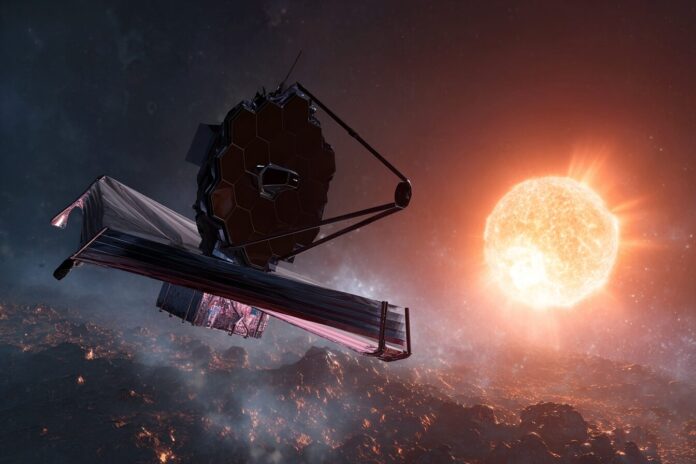The search for an Earth-like exoplanet has long captivated astronomers and the public alike. Initially, TRAPPIST-1d emerged as a beacon of hope; its location within the TRAPPIST-1 system made it one of the most promising candidates for hosting a life-supporting environment similar to our own planet. Because of its ideal placement near the inner edge of the habitable zone, researchers were excited about its potential to harbor liquid water and an atmosphere conducive to life.
Most importantly, the intense interest in TRAPPIST-1d is not solely due to its size and orbit. Scientists believed that if this planet possessed even a thin atmosphere, the conditions might mirror those on Earth. Therefore, the prospect of discovering complex atmospheric processes similar to those on our planet added fuel to ongoing exoplanet exploration narratives.
Why Was TRAPPIST-1d So Exciting?
The TRAPPIST-1 system gained global attention shortly after its discovery in 2017. The system houses multiple Earth-sized rocky planets, with TRAPPIST-1d occupying a particularly intriguing position. Because it orbits close to its host star, scientists were eager to assess its potential for retaining an atmosphere, a key component for sustaining life. In this context, the role of the James Webb Space Telescope (JWST) became critical, as its advanced instruments promised unprecedented clarity in examining these distant worlds. [NASA Science]
Moreover, besides its strategic location in the habitable zone, TRAPPIST-1d was celebrated for its Earth-like dimensions. This similarity in size generated optimism that the planet’s surface conditions could be amenable to life. Because of these compelling factors, TRAPPIST-1d was viewed as a potential test bed for theories about planetary formation and habitability.
What Did JWST Discover About TRAPPIST-1d?
In late 2022, JWST observed two consecutive transits of TRAPPIST-1d using its sophisticated NIRSpec/PRISM instrument. The telescope aimed to harness the power of transmission spectroscopy, a technique that examines starlight as it filters through a planet’s atmosphere. Because this method can reveal the presence of key molecules, it was expected to provide invaluable insights into the planet’s atmospheric makeup. [Universe Today]
Most importantly, the resulting spectrum was unexpectedly flat. This outcome indicated that there were no discernible signs of essential atmospheric molecules such as methane, carbon dioxide, or water vapor—markers that typically define a dense, Earth-like atmosphere. Therefore, these findings allow scientists to confidently rule out the presence of an atmosphere with Earth-like qualities on TRAPPIST-1d. Because of these results, researchers are now reconsidering the atmospheric dynamics typical of planets in the TRAPPIST-1 system.
Why Doesn’t TRAPPIST-1d Have an Earth-like Atmosphere?
The absence of an Earth-like atmosphere on TRAPPIST-1d has sparked numerous questions about what environment might actually exist on the planet. There are several possibilities that researchers have begun to explore because each scenario could imply vastly different surface conditions. One potential explanation is that the planet might have an extremely thin atmosphere, similar to that seen on Mars, which current instruments struggle to detect.
Because TRAPPIST-1d is exposed to a different type of stellar radiation compared to Earth, another possibility involves the presence of thick, high-altitude clouds or persistent haze—reminiscent of Venus’ obscuring layers—that block conventional atmospheric signatures. Besides that, it remains plausible that TRAPPIST-1d is a barren, rocky world without any atmosphere at all. Each of these scenarios significantly diminishes the likelihood that the surface supports conditions conducive to life as we know it. [News UChicago]
Impact on the Search for Habitable Worlds
The discoveries regarding TRAPPIST-1d are not just about a single exoplanet; they have broader implications for exoplanet science as a whole. Because the absence of an Earth-like atmosphere challenges previous assumptions, these findings underscore the complexities involved in identifying truly habitable worlds. Most importantly, such research teaches us that a planet’s location in the habitable zone does not guarantee that it possesses the necessary conditions for life. [Space.com]
Furthermore, scientists are now encouraged to adopt a more cautious approach when evaluating exoplanetary habitability. Because the TRAPPIST-1 system contains several Earth-sized planets, researchers are motivated to reexamine each candidate closely. This careful analysis is critical in advancing our understanding, because every observation contributes valuable information to the puzzle of planetary atmospheres and, by extension, the potential for life beyond Earth.
What Comes Next?
Although these findings rule out TRAPPIST-1d as an Earth twin, the journey to uncover life-friendly planets is far from over. Because the JWST continues to expand our knowledge of distant worlds, future observations of other TRAPPIST-1 planets may yet reveal more promising conditions. Most importantly, ongoing research is already refining our models of planetary formation and atmospheric evolution, meaning that each new dataset adds depth to our overall cosmic understanding.
In addition, new strategies in detecting and interpreting atmospheric signals are being developed at a rapid pace. Because scientists are exploring a wide range of technological and methodological approaches, the path forward is filled with potential breakthroughs. Therefore, even though TRAPPIST-1d does not meet the Earth-like criteria, it remains a crucial piece in the grand puzzle of exoplanet studies, guiding future research and observational strategies.
References and Further Reading
- Universe Today: The JWST Shows Us That TRAPPIST-1d Is Not As Earth-Like As We Hoped
- University of Chicago: Scientists Rule Out an Earth-like Atmosphere for TRAPPIST-1d
- NASA Science: Webb Narrows Atmospheric Possibilities for Earth-sized Exoplanet TRAPPIST-1d
- Space.com: TRAPPIST-1d isn’t the Earth-like planet scientists had hoped it to be



